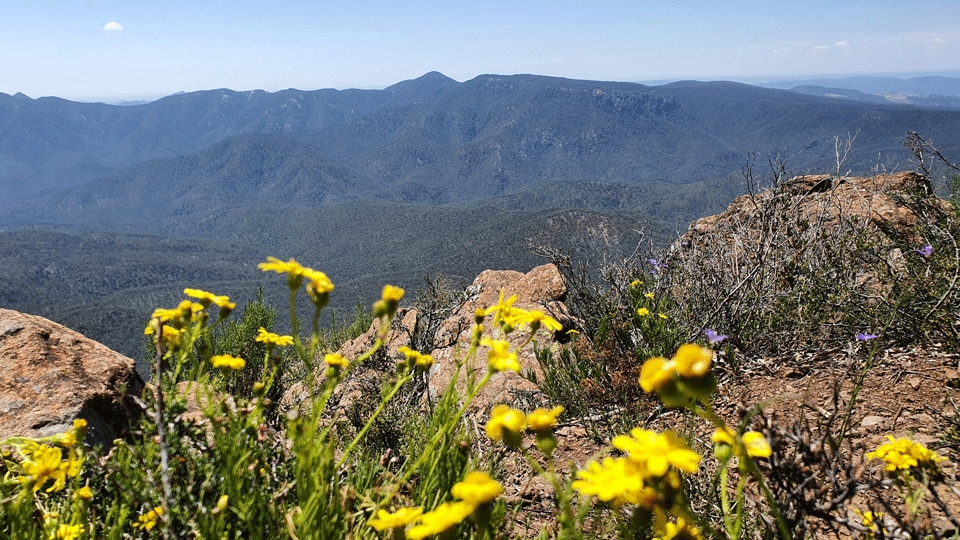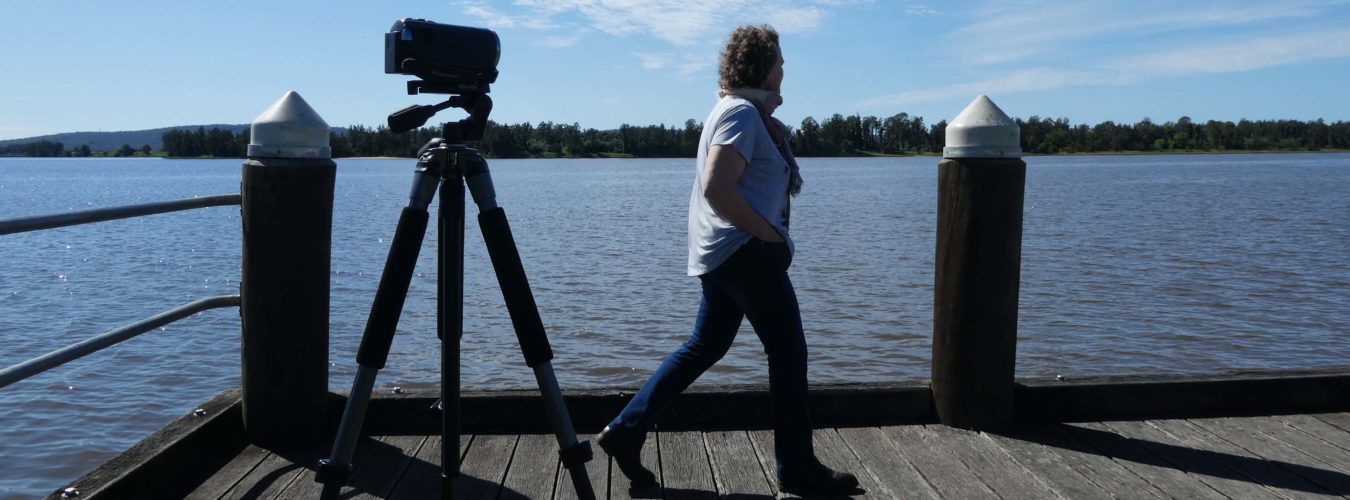Kamilaroi Country
At a time when Australia’s breathtaking landscapes have never been more popular, Mt Kaputar National Park is one for your domestic travel bucket list.
Mt Kaputar National Park is 570km northwest of Sydney on the edge of the great flat western plains. True, that’s a bit of a hike, but well worth it.
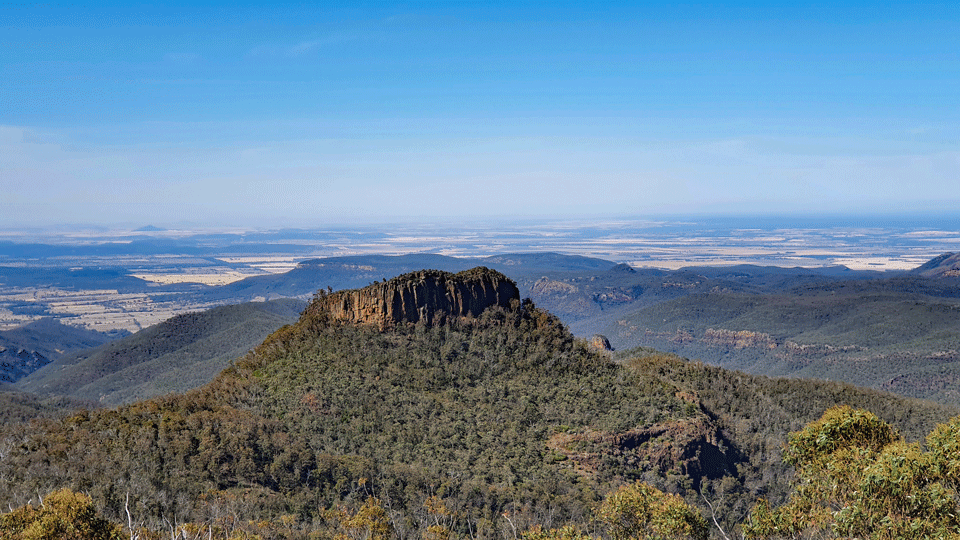
The Nandewar Range presents a spectacular backdrop to the regional town of Narrabri, and from Nandewar’s various peaks, the patchwork of surrounding farmland can be seen stretching off to the distant horizon.
Mt Kaputar National Park covers 38,000 hectares and encompasses the extraordinary remains of an ancient shield volcano.
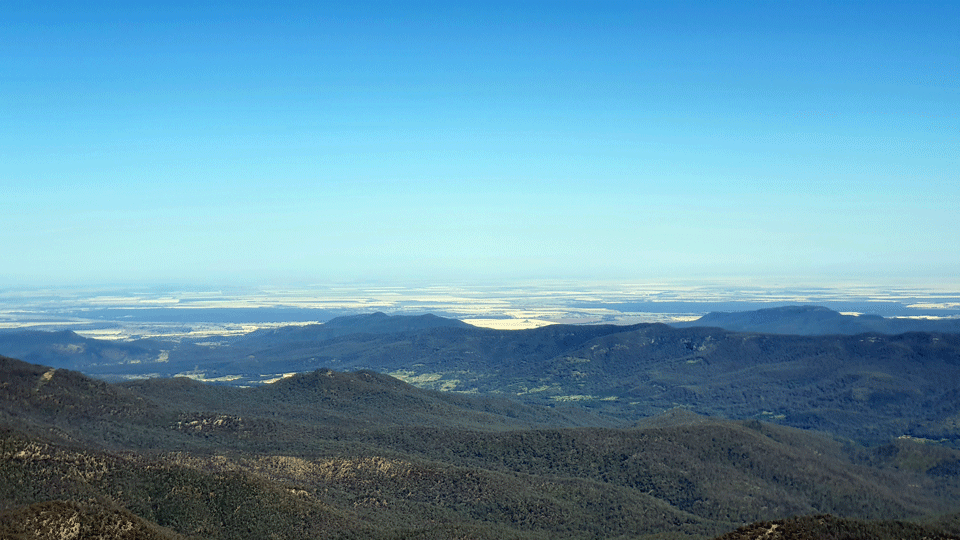
This monster existed 17 million years ago in the hard-to-imagine past where it spewed forth rivers of lava onto the surrounding plains.
The landscape left today is the eroded remnant of that volcano which once stood 2km high and 50km across.
The same tectonic forces which gave rise to Nandewar also produced the Warrumbungle volcano 150km to the south west and a string of others stretching along the east coast from Queensland to Victoria.
What we did
Bushwalking
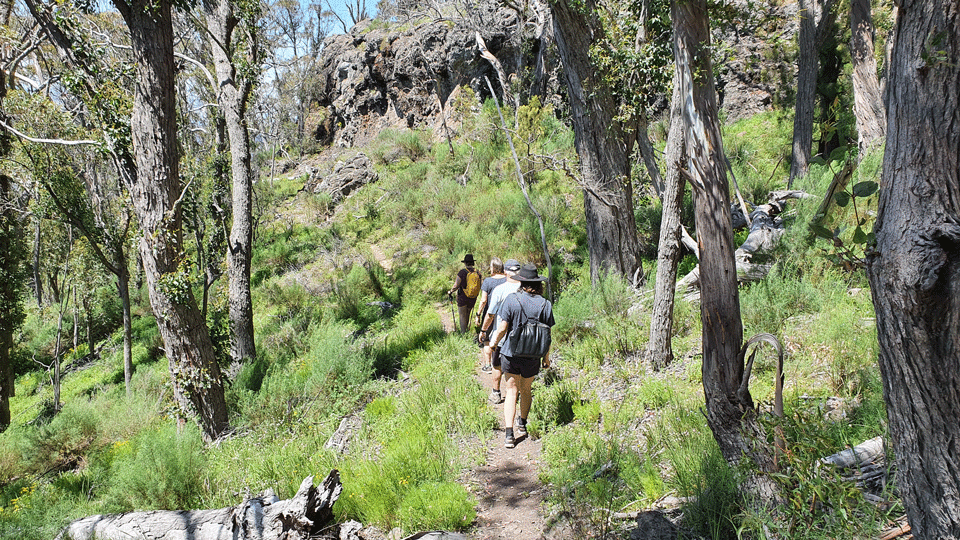
Mt Kaputar National Park offers some of the most spectacular bushwalking scenery we’ve seen, even taking into account the severe bushfires that ripped through the park at the end of 2019. The scars of those fires are clearly visible. There are some early signs of recovery, but it’s going to take a long time. Some of the main walks are still closed, and you should check the NSW National Parks and Wildlife Service alerts before you go.
The park is a place of contrasts. In winter, the highest peaks can be freezing with serious frost and snow. Even on the day of our visit when it was a warm 34 degrees down in Narrabri (50km away) it was significantly colder up on the mountain and at times we put on a jacket (make sure you take one). Down lower, rainforest hangs on in warmer and moister patches. One minute you’ll be strolling among the snow gums, high alpine grasses and meadows of alpine daisies, then later beneath a large fig.
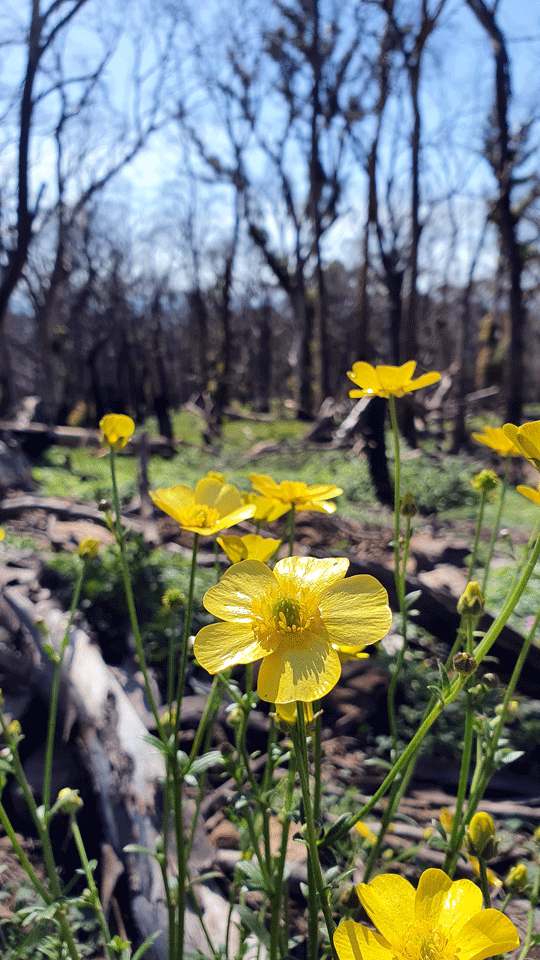
The geological features of the park are quite amazing. Mt Kaputar peak is the highest in the park at 1510m above sea level (don’t panic, you can drive up to it). It was once the hellish centre of the Nandewar volcano, a far cry from the peaceful place of stunning views and cool winds it is today. As you explore the park you will see deep, narrow valleys and steep ridges. Sheer cliffs drop away from ancient exposed lava terraces.
If all you want to do is see a couple of lookouts just metres from your car – you won’t be disappointed. You will pass Doug Sky lookout on the right as you are driving into the park. From here we saw the volcanic remnant of Euglah Rock (see picture above) tree covered slopes and beyond that, the distant plains. You can drive up to Mount Kaputar Summit Lookout too, and it’s a few steps up to views that will take your breath away.
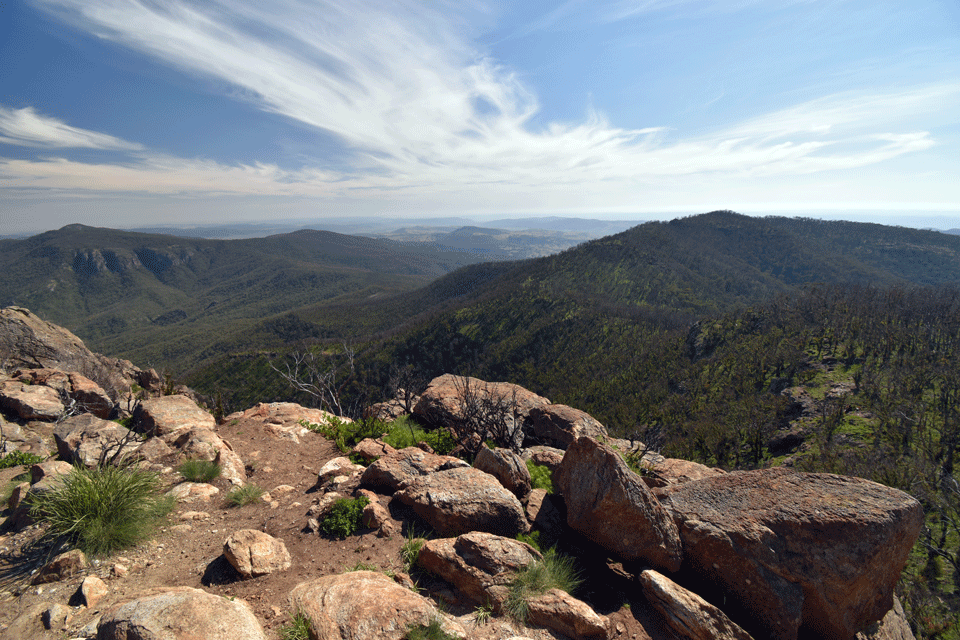
Lindsay Rock Tops was an easy walk to a startling rocky landscape (takes about an hour return). Here you’ll be standing on the weathered surface of an old lava flow. In places you can see the cracked and blistered surface of the flow as it would have looked 17 million years go. There are panoramic views to the east and south. This walk is usually part of the Bundabulla Circuit Track most of which was still closed due to fire damage on the day we were there.
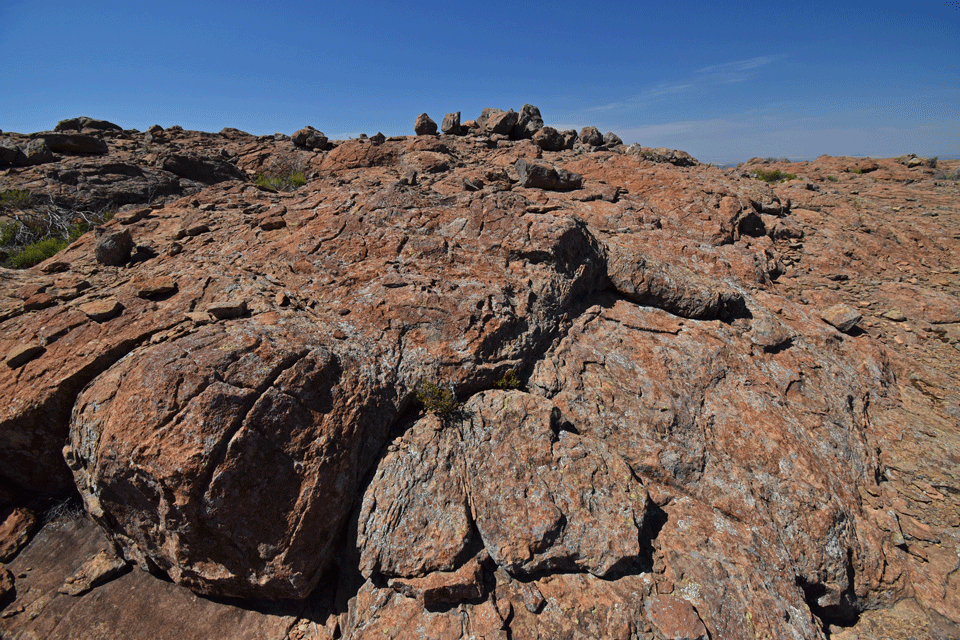
We took a three-hour return walk to the summit of Mt Coryah and it was fabulous. Yes, it was steep. Yes, there were many steps. Yes, its medium to hard rating was justified. But it was so worth it as we picked our way up the steps past fields of paper daisies, beneath towering snow gums, through strange forests of grass trees, stopping often to look back on where we’d come.
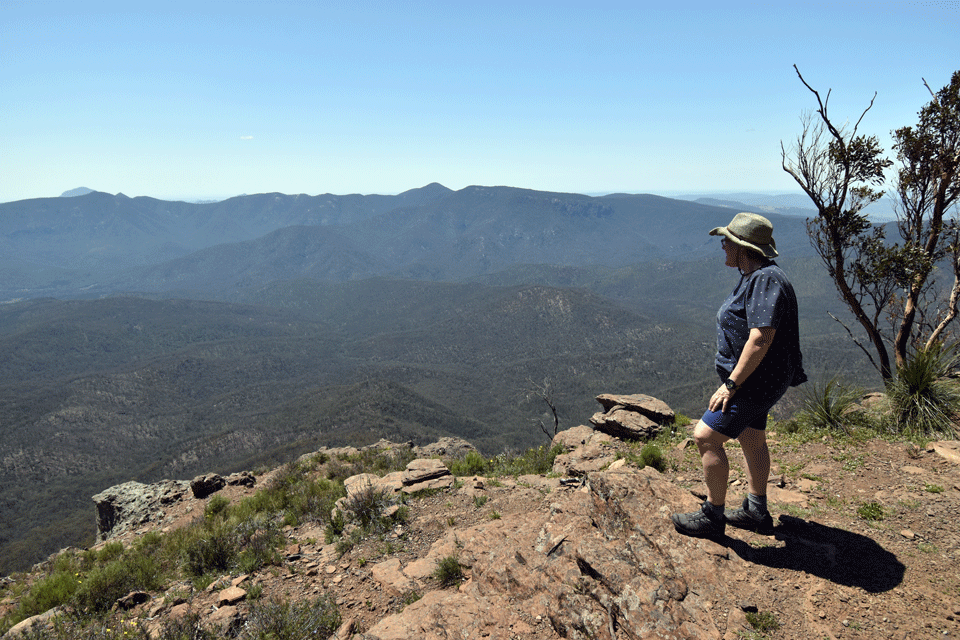
At the top, the climb was soon forgotten as the glorious view opened, and the strong winds threatened to take our hats. The return leg involves traversing a very narrow track along the cliff face. This required scrambling over rocks and while not hard, might not be for those who are less mobile and not fond of heights.
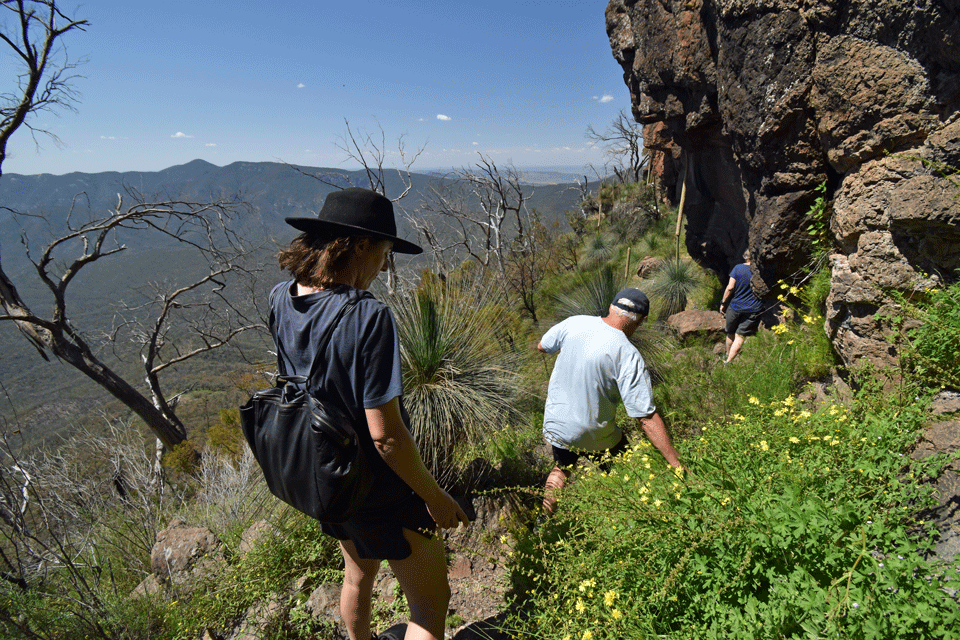
If you are going up there for the day, then you will need to take in all your food and water. We enjoyed a picnic at Dawson’s Spring camping area . There are picnic tables, barbecues, and toilets.
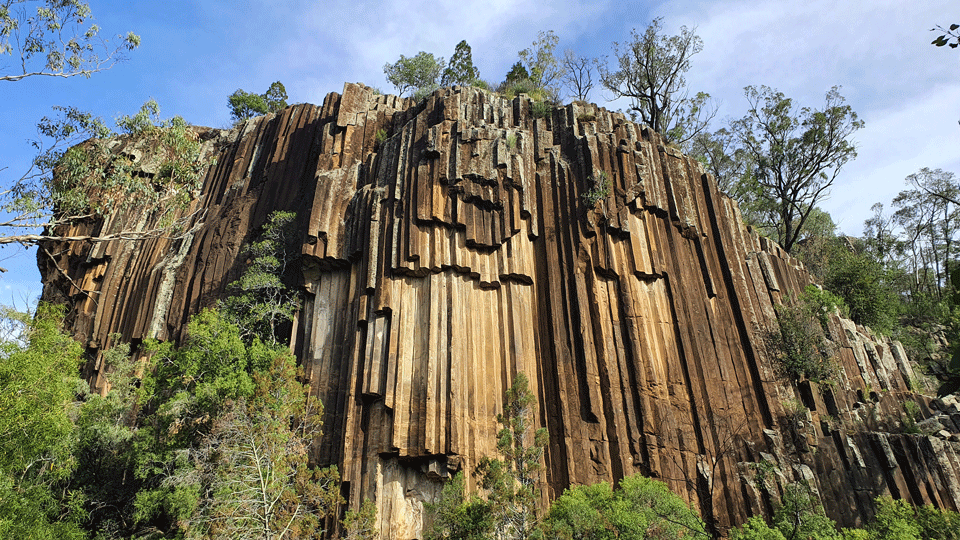
Must see
Perhaps the most spectacular of Mt Kaputar National Parks’ geological wonders is Sawn Rocks. You must access this from a different and unlinked part of the park. To get there you will have to drive back into Narrabri. You’ll find it 37km northeast of town on the Bingara Road. From the sealed carpark with picnic tables, barbecues and toilets, it’s a short walk on a well-formed track to the base of the astounding rock feature.
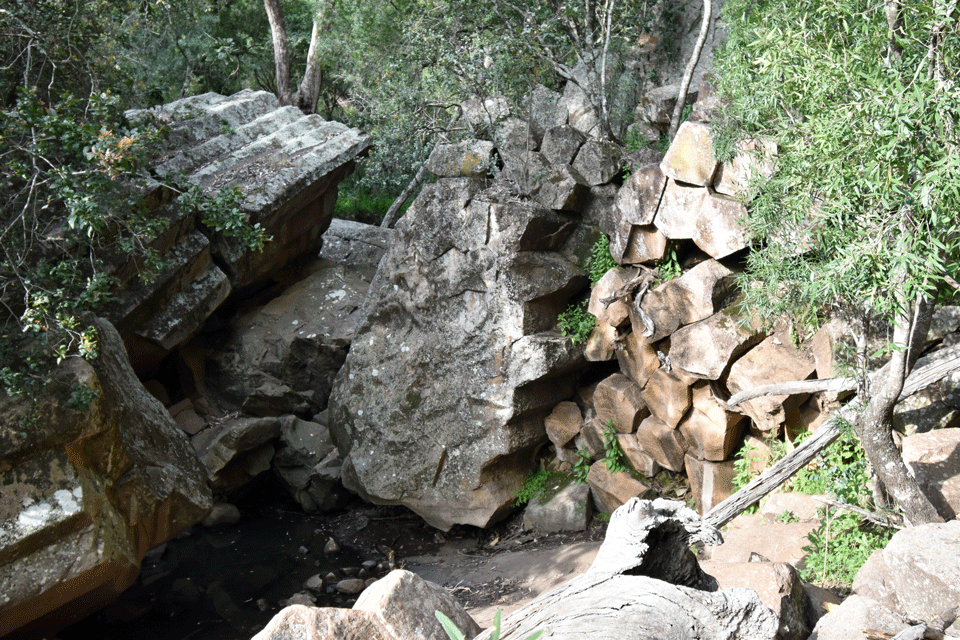
This formation is said to be the best example of columnar jointing (or organ piping for the non-geologists) in Australia. It’s created by lava cooling at a uniform rate, producing incredibly even, geometrically-similar pillars. Of course, these were once underground, but erosion by the creek has revealed them over millions of years.
Where we stayed
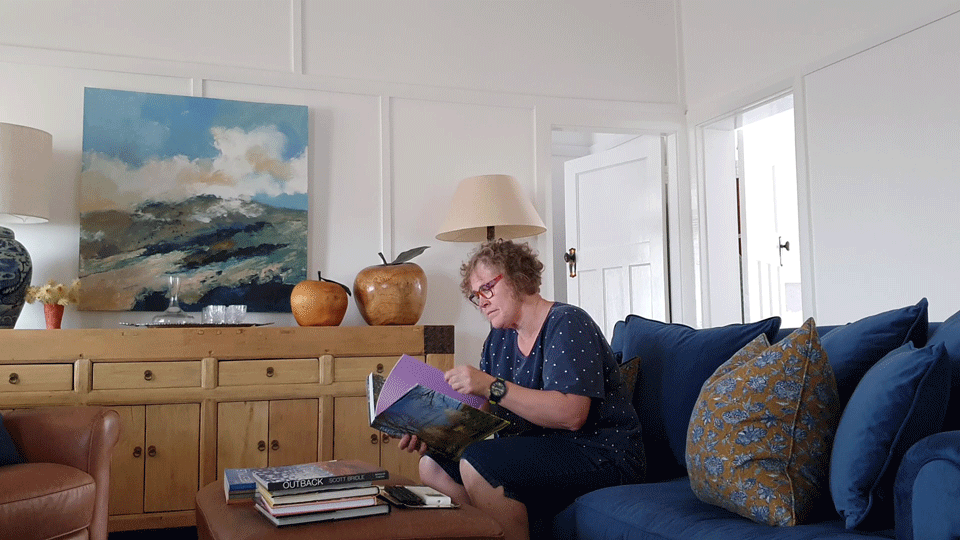
Narrabri is the perfect base for exploring Mt Kaputar. We stayed in an apartment in the main street called The Dewhurst which we booked through Airbnb. This beautifully decorated and renovated historic building sleeps six adults in three bedrooms.

We enjoyed a couple of delightful evening barbecues and drinks on the fully enclosed verandah overlooking the street below. Beautifully clean and comfortable and an easy stroll to shops and restaurants.
Where we ate
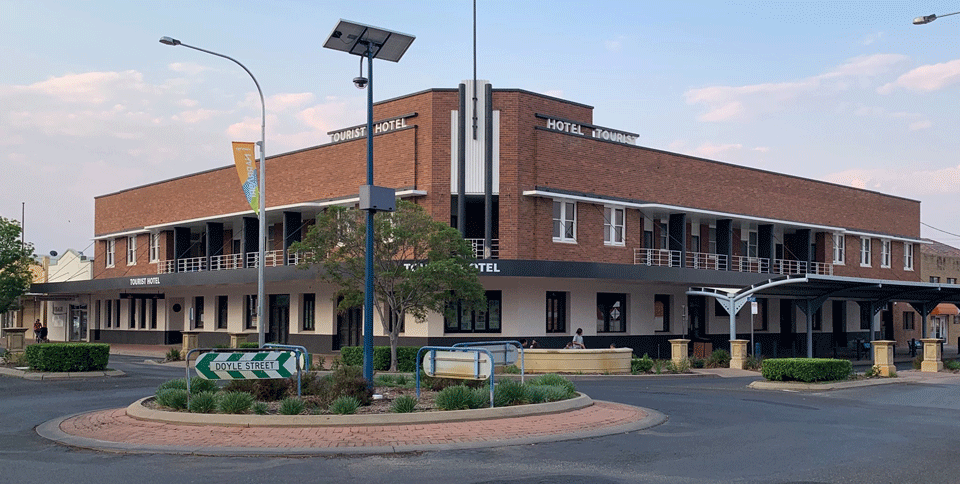
On our first night after a long drive from the coast, it was fantastic to discover the fully restored art deco Tourist Hotel which was built in 1938. You’ll find it in the main street. Excellent menu and friendly service . All the COVID 19 rules are being followed, so ring ahead to ensure a table.
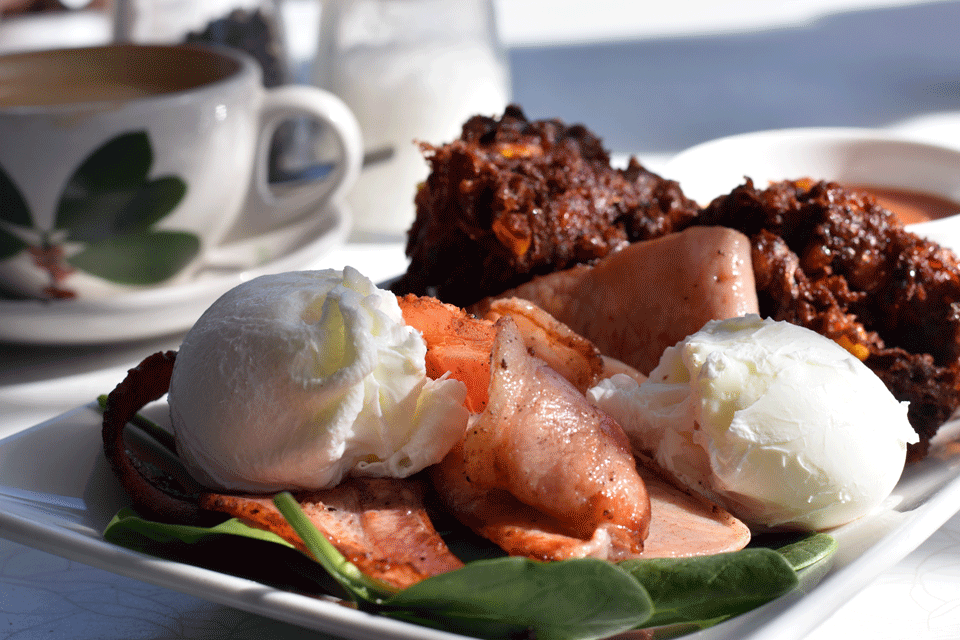
We also enjoyed a breakfast at Coogle Cafe at 13 Doyle Street. It’s a bicycle and dog friendly cafe within a nursery, and we sat outdoors at a table in the sun. They bill themselves as a health-focused cafe and we enjoyed our breakfast.
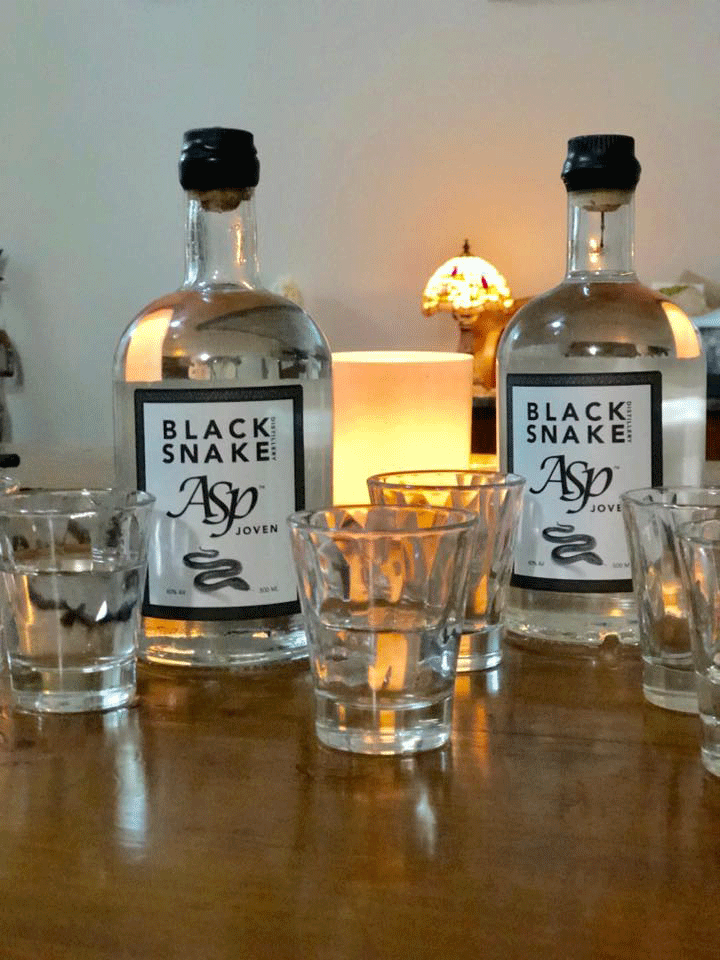
The town is well served with supermarkets and a variety of shops. You’ll have no trouble finding what you need. We also called in to Blacksnake Distillery – a craft distillery producing a unique agave spirit called “Asp” in the style of mezcal and tequila. You can find out more about local foods, produce and experiences at Nosh Narrabri.
